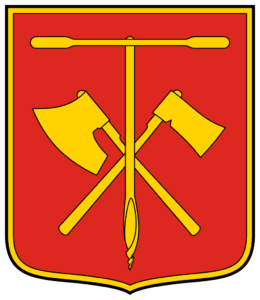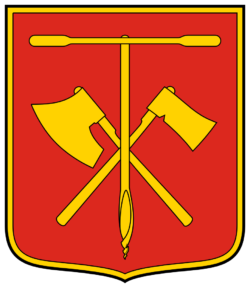Bakonyújvár / Bakonybél

The castle of Bakonyújvár / Bakonybél is also called Podmaniczky castle, it is about three kilometers from the Gerence Valley of the Bakony Mountains. It is sitting on a very narrow ridge of the 432-meter-high Tönkölös Hill. The eagle-nest of the infamous Podmaniczky robber knights was built on top of a huge Bronz-Age fortification in the 16th century. The 210-meter-long and 140-meter-wide medieval castle was controlling an important trade route that was leading to the north. The countryside suffered a lot because of the violent knights who were looting and terrorizing the area…

It is a mystic place, overgrown by a forest: so far there has been no archeological excavation at all, and we do not have much information about the castle’s secrets. The remains of Bakonyújvár castle are located a bit to the north of the village of Bakonybél. The name „Bakony” stands for the mountain around the place while „újvár” means „new castle”. On the other hand, Bakonybél means „the inside of Bakony”.

The settlement was not just a dusty village in Hungary: during the Middle Ages, it was a significant spiritual center in the Árpád Age between the 11th and the 14th centuries. The first written mention of the place appeared in 1083 as „Beli”. The history of the settlement has been intertwined with the Benedictine monastery, founded by King Saint István (Stephen). We know that the famous St. Gellért (Gerard) used to live there as a hermit between 1023 and 1030, and a chapel not far from the village also commemorates him. Also, Saint Günther used to live here.

Before the Podmaniczky knights ever started any constructions, a prehistoric Bronz Age earthen fortification had been on the hill. It is quite probable that an Árpád Age castle may have existed there in the 14th century before the Podmaniczky family appeared, and it may have been the center of the Bakony forest estate, owned by various owners.

When King Szapolyai was crowned in 1526, Habsburg Ferdinand, Prince of Bohemia usurped the Hungarian throne and the Dual Kingship of Hungary tore the country into two parts. After the Ottoman-Turkish attack in 1529, for the time being, the party of King Szapolyai was gaining power. It was the time when the Podmaniczky family received the countryside as a donation from the king. The Podmaniczky brothers, János (who died in 1546), and Rafael (who died in 1559) acquired sizeable estates in the Bakony Mountains.

The brothers had Bakonyújvár castle built on the southern part of the border of the village of Szücs (Bakonyszücs), which initially had belonged to the lands of Ugod Castle. The outer castle had an irregular rectangular floor plan while the inner castle’s floor plan was reminiscent of slippers. The fort was built between 1529 and 1533 by the brothers. They had the castle constructed between the 10-meter-wide ramparts of the prehistoric earth castle. There was a stone bastion and some residential buildings stood in the courtyard, attached to the castle wall.

The Podmaniczky brothers seem to have only the southern part of the former fortress used here, an area that was 50 meters long and 30 meters wide. They separated the northwestern part of the area by a wide and deep ditch from the further northern part of the castle. The outer part may have been a place where they could build a few farm buildings and barns for their animals.

The Podmaniczky lords were dreaded robber knights who plundered the important trade route that leads through the Gerence Valley to the north, right at Bakonybél. The Abbey of Bakonybél suffered the most from their looting. They kept the whole countryside in constant dread and in the meantime, they acquired most of the lands in the county. Among other churches, the Cistercian monastery and church in Zirc were regularly robbed. The Podmaniczky lords were the ones who permanently expelled the Franciscans from Várpalota castle. The brothers enlarged their estates by switching sides between King Szapolyai and King Ferdinand.

They supported King Szapolyai with their soldiers when the fights were raging along the Vág River, and in exchange for their military deeds, they received Várpalota castle and all of its estates from the king in 1537. However, their crimes caused public outrage, and the Diet of Besztercebánya had to deal with them in 1543 as well as the Diet of Pozsony in 1545. The Diet of Nagyszombat ruled in 1546 that the brothers were not guilty of treason, on the other hand, because “they have returned to the grace of the king” but their castles (Bakonyújvár, Ordó Castle, and Szerdahely Castle) had to be demolished. This time, their overlord was King Habsburg Ferdinand.

The Podmaniczky brothers did not accept the verdict so King Ferdinand had to send troops in 1546-47. They laid a proper siege on Bakonyújvár castle, and upon taking it, they demolished the walls. According to legend, for the siege of the castle, the royal troops lined up on the opposite Táborhely Hill, and after the fighting, the fallen were buried in three mound graves at the foot of the mountain.

The Diet of 1548 no longer mentions the existence of Bakonyújvár castle. After his brother’s death, Podmaniczky Rafael became the sole owner of the vast Podmaniczky property. He moved to Beszterce and left his officers in Várpalota castle whose job was to organize the defense against the Ottoman Turks. Rafael somehow managed to keep hold of Várpalota castle during the reign of King Ferdinand, though.

It is not known exactly when the remains of Bakonyújvár castle may have disappeared completely. However, its ruins were mentioned even in 1738, then, its territory belonged to the Esterházy family. According to Bél Mátyás, there were large ruins still standing in 1772, and we can read about them in the Pápai Newspaper in 1886, too. The key to the Podmaniczky castle is said to be kept in the Abbey of Pannonhalma. It was still there in the 1960s, and according to its design, it dates back to the 15th and 16th centuries.

The floor plan of Bakonyújvár castle is similar to that of a slipper, and there was supposed to be a stone tower overlooking Gerence Hill. Passing through the wide moat, we can approach the castle from the south. This was the most strategically important part of the medieval Podmaniczky Castle. The castle is divided into two parts. As it was accessible only through a 5-10 m wide ridge stretching from Tönkölös Hill, the outer castle was built between the two 10 m wide ramparts of the prehistoric earthen castle. This section was reinforced by strong walls and by an irregular rectangular-shaped stone bastion. As for the outer walls, their length was 18x30x30x25 meters.

The entrance at the ridge was the strategically most important part of the castle because it closed the path of any easy access. There used to be a drawbridge, which led through the outer moat and opened into the vaulted castle gate. This vaulted castle gate led to the next section of the fort: it was necessary to go through this area to reach the second castle gate that opened on the opposing castle wall. After this, the third castle gate had to be opened if someone wanted to get into the unusually large inner courtyard that was about 7,000 square meters. The courtyard is 185 meters long and about 28 / 56-meter-wide.

There had been residential buildings around the courtyard, attached to the castle walls. We can find a large amount of stone and mortar debris on the southern edge of the outer castle. Also, we can just guess the location of some of the buildings from the shape of the terrain.

The section of the Bronz Age ramparts over Somhegypuszta is called the Podmaniczky road, because according to oral tradition, the infamous lords of Bakonyújvár rode on it between their castles, turning their horseshoes on their horses backward so that no one knew exactly where they were going. These ramparts of the inner castle can be easily followed, and the walls running under our feet can be seen.

Dear Readers, I can only make this content available through small donations or by selling my books or T-shirts:
Please, feel free to support me with a coffee here:
You can check out my books on Amazon or Draft2Digital, they are available in hardcover, paperback, or ebook:
https://www.amazon.com/dp/198020490X or at https://books2read.com/b/boYd81

My work can also be followed and supported on Patreon: Become a Patron!http://Become a Patron!
[wpedon id=”9140″]

https://hungarianottomanwars.myspreadshop.com/all


























